University Finance Report: Cost of Capital Analysis for Bad Boys Inc
VerifiedAdded on 2022/08/18
|8
|816
|12
Report
AI Summary
This report provides an analysis of the cost of capital for Bad Boys Inc. It evaluates the company's weighted average cost of capital (WACC) under varying capital structures, considering the use of debt, preferred stock, and common equity. The report details the steps involved in calculating the cost of debt, cost of preferred stock, and cost of common equity, along with the impact of these costs on the overall WACC. The analysis includes scenarios where the capital structure changes, demonstrating how the WACC fluctuates based on the proportion of different funding sources. The conclusion highlights that the cost of capital is a crucial metric for investment decisions and is influenced by the company's capital structure. The report provides a clear understanding of how changes in the proportions of debt, equity, and preferred stock affect the company's financial performance and overall cost of capital.
1 out of 8
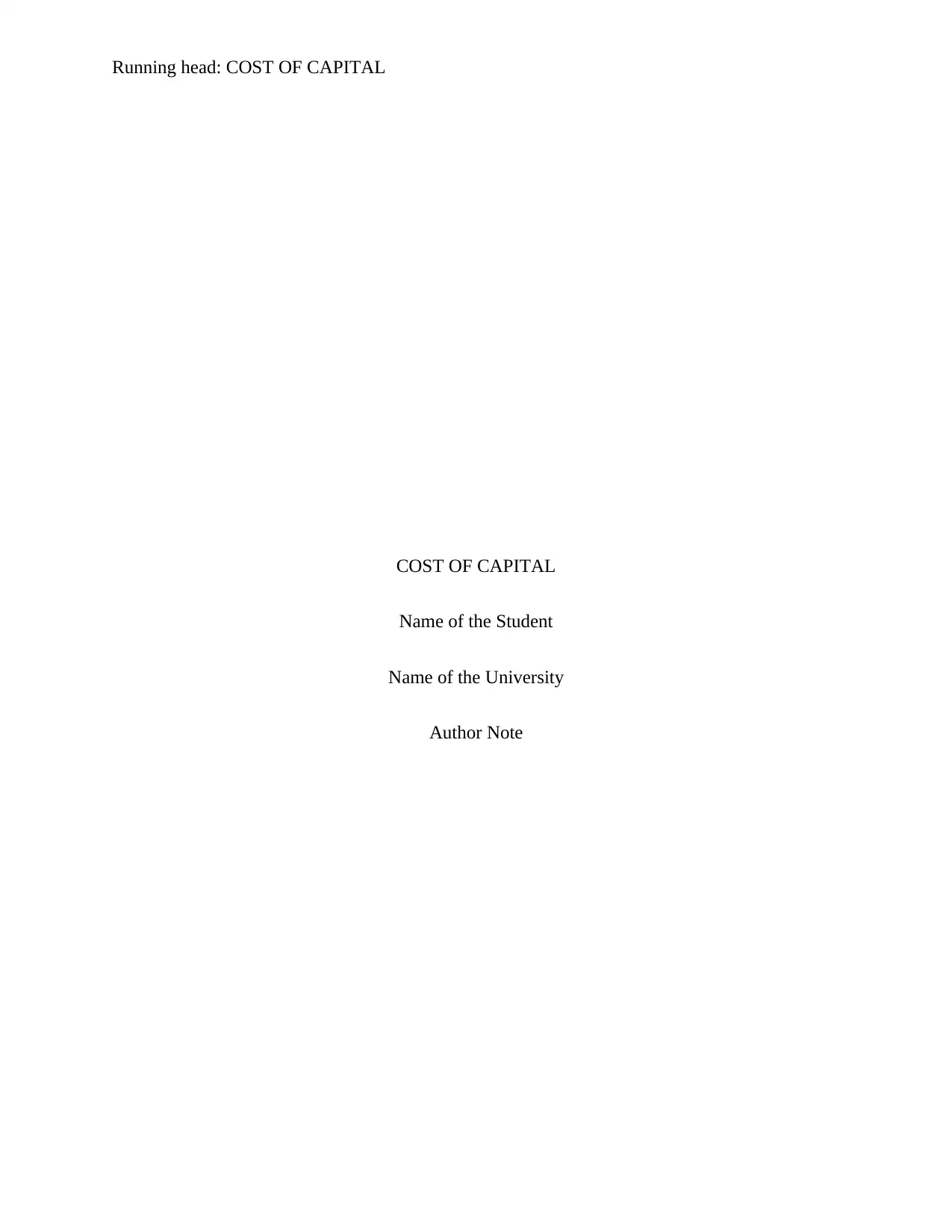
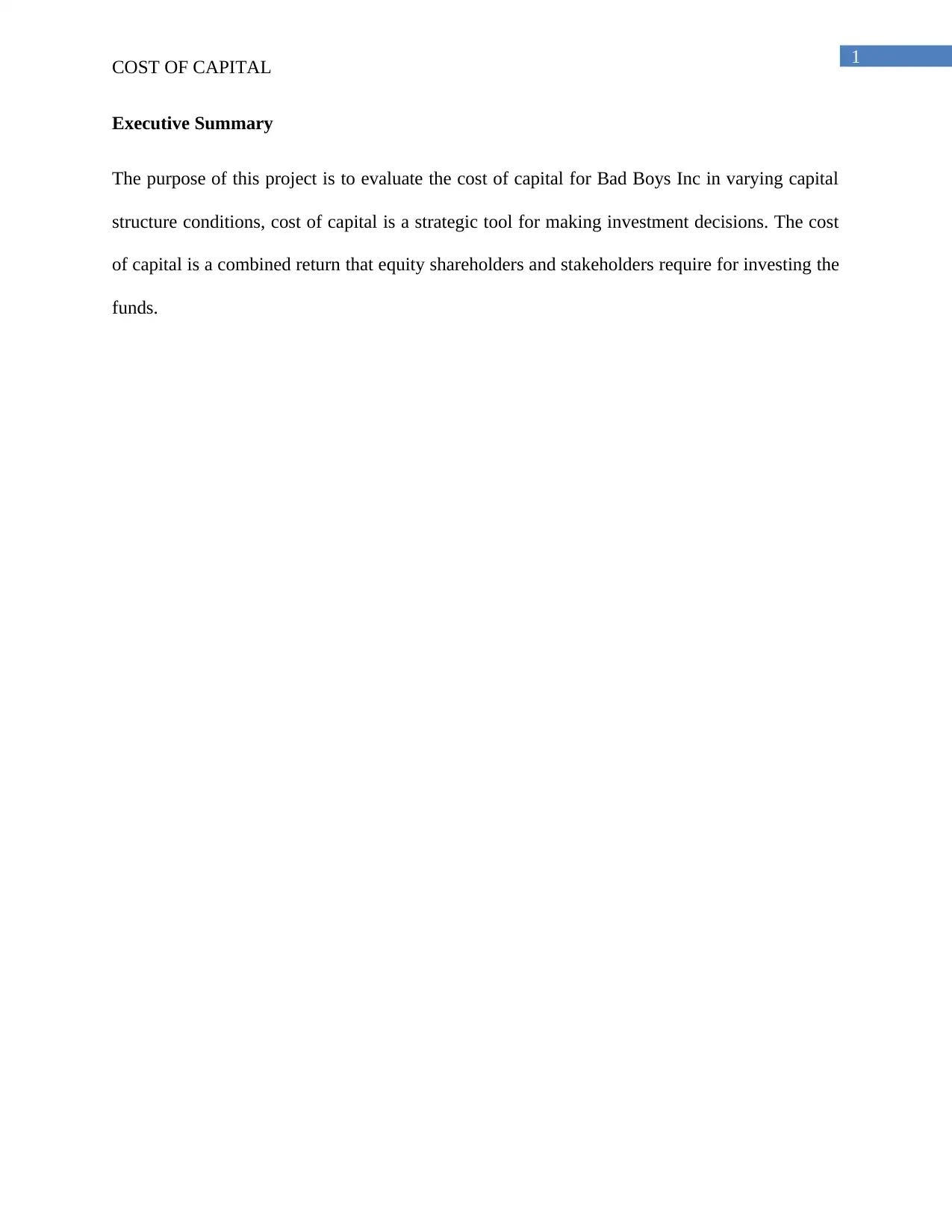
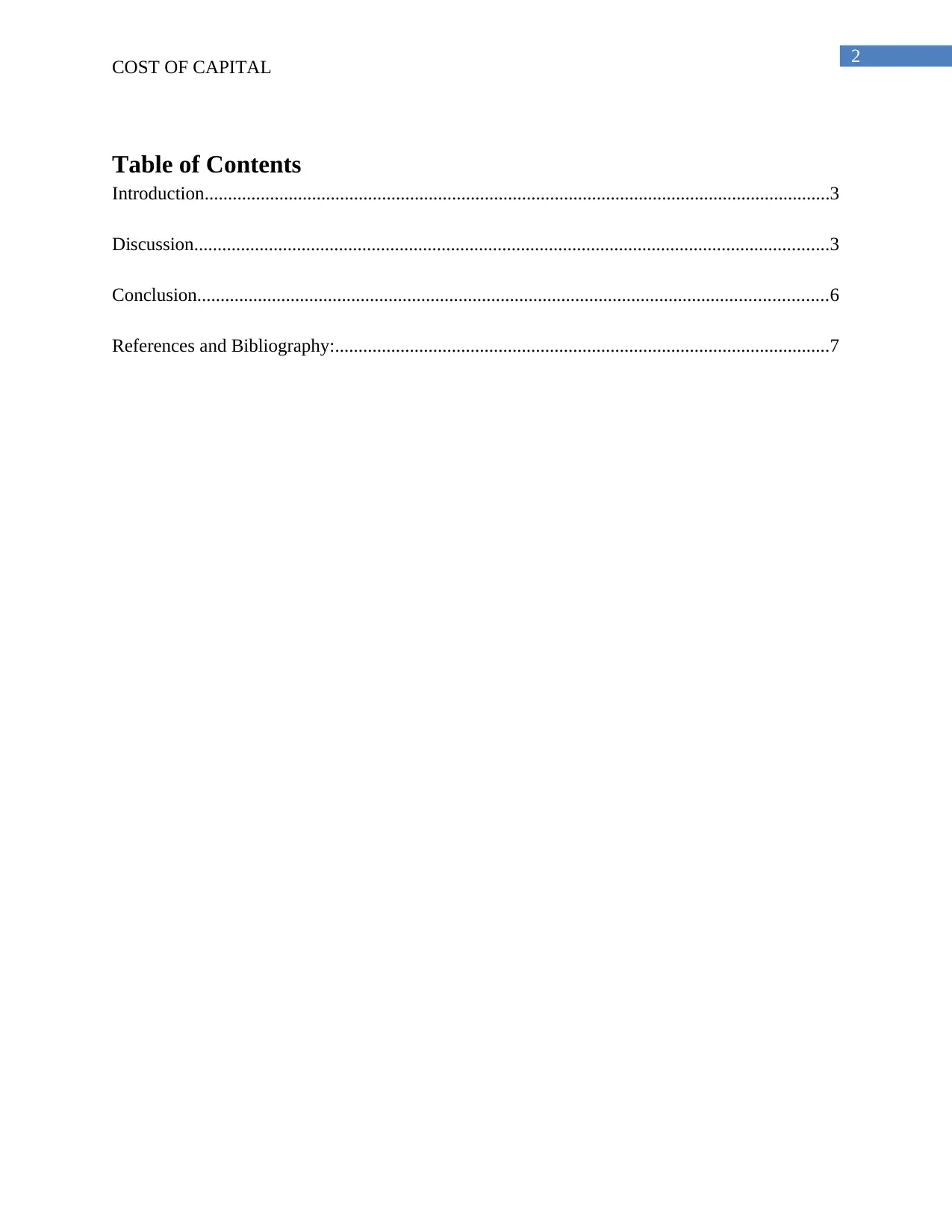

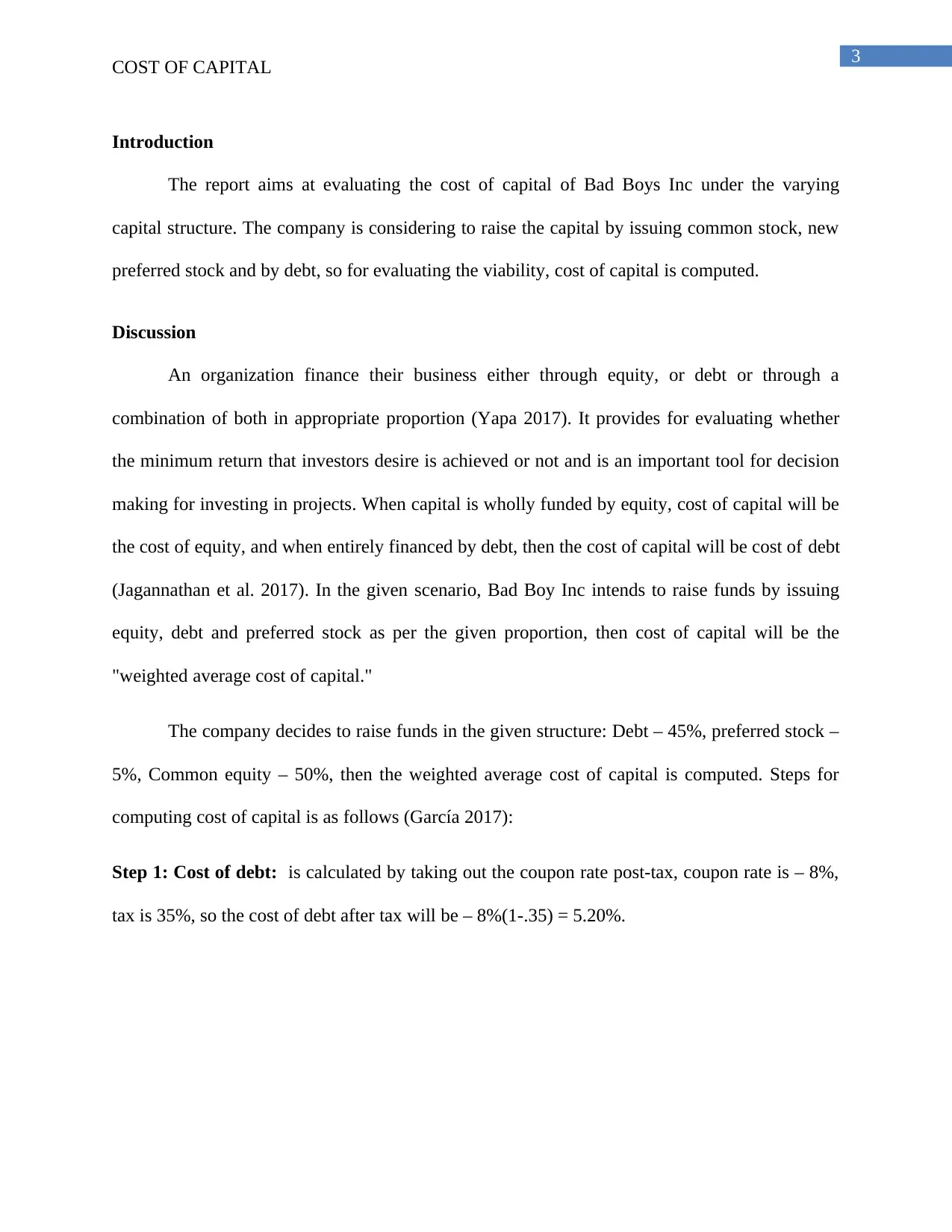
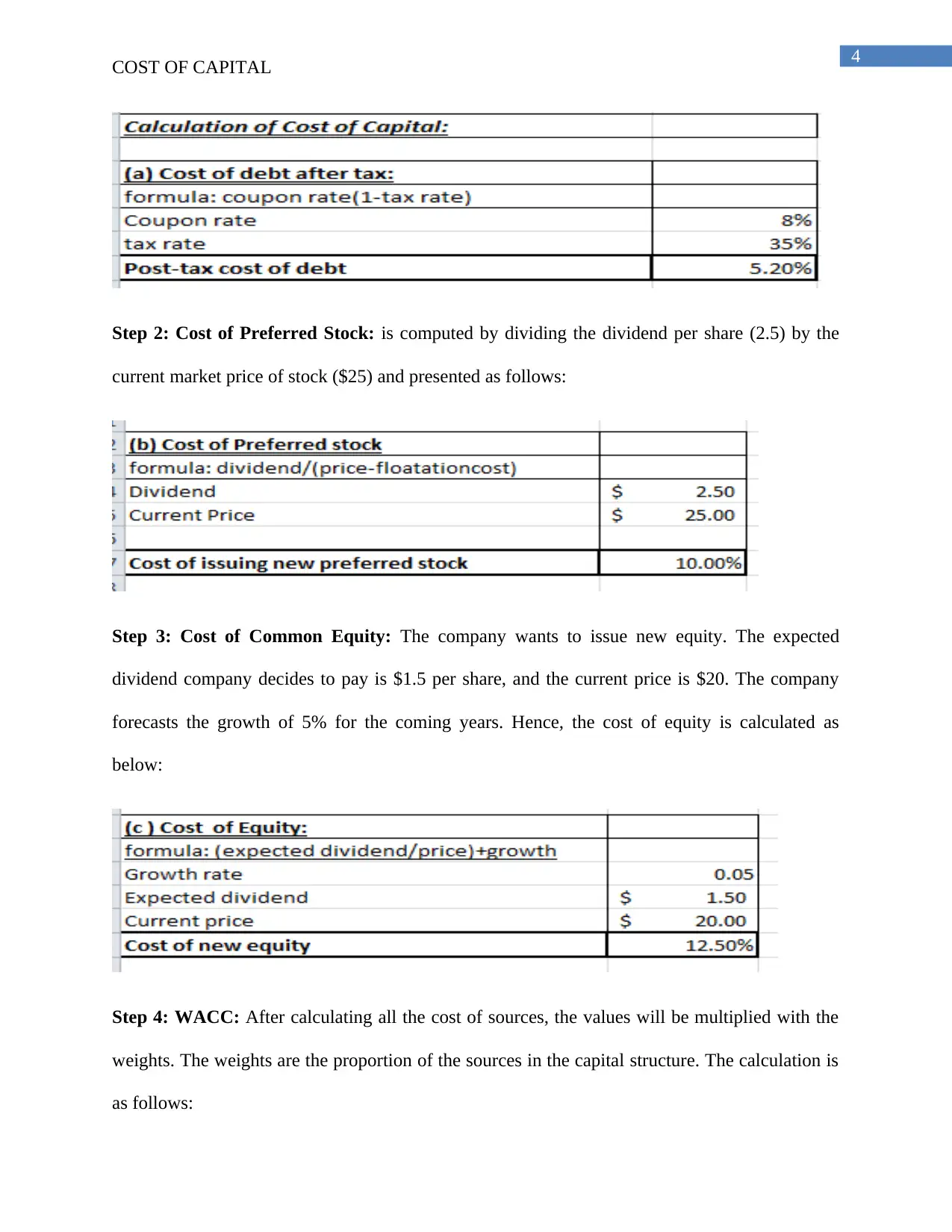
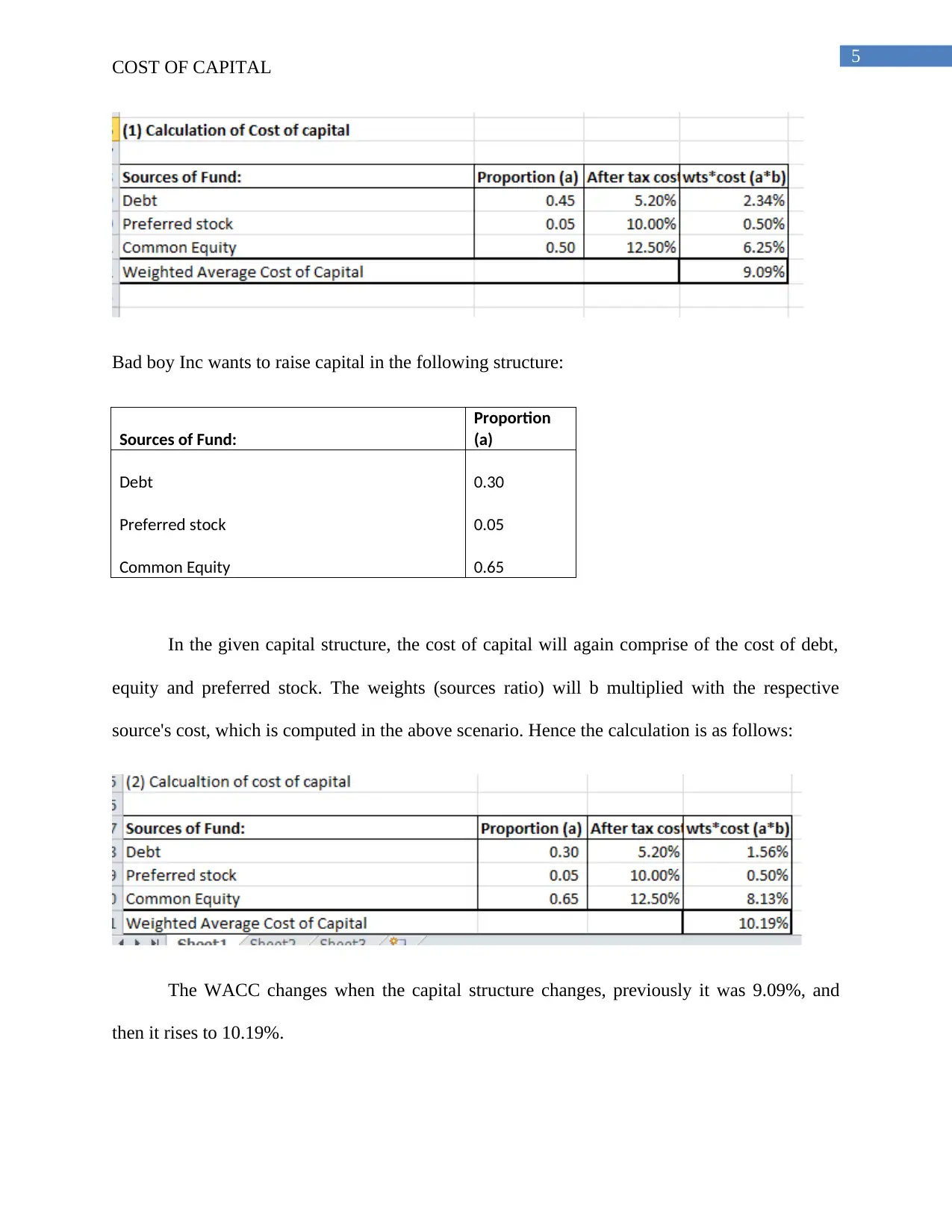
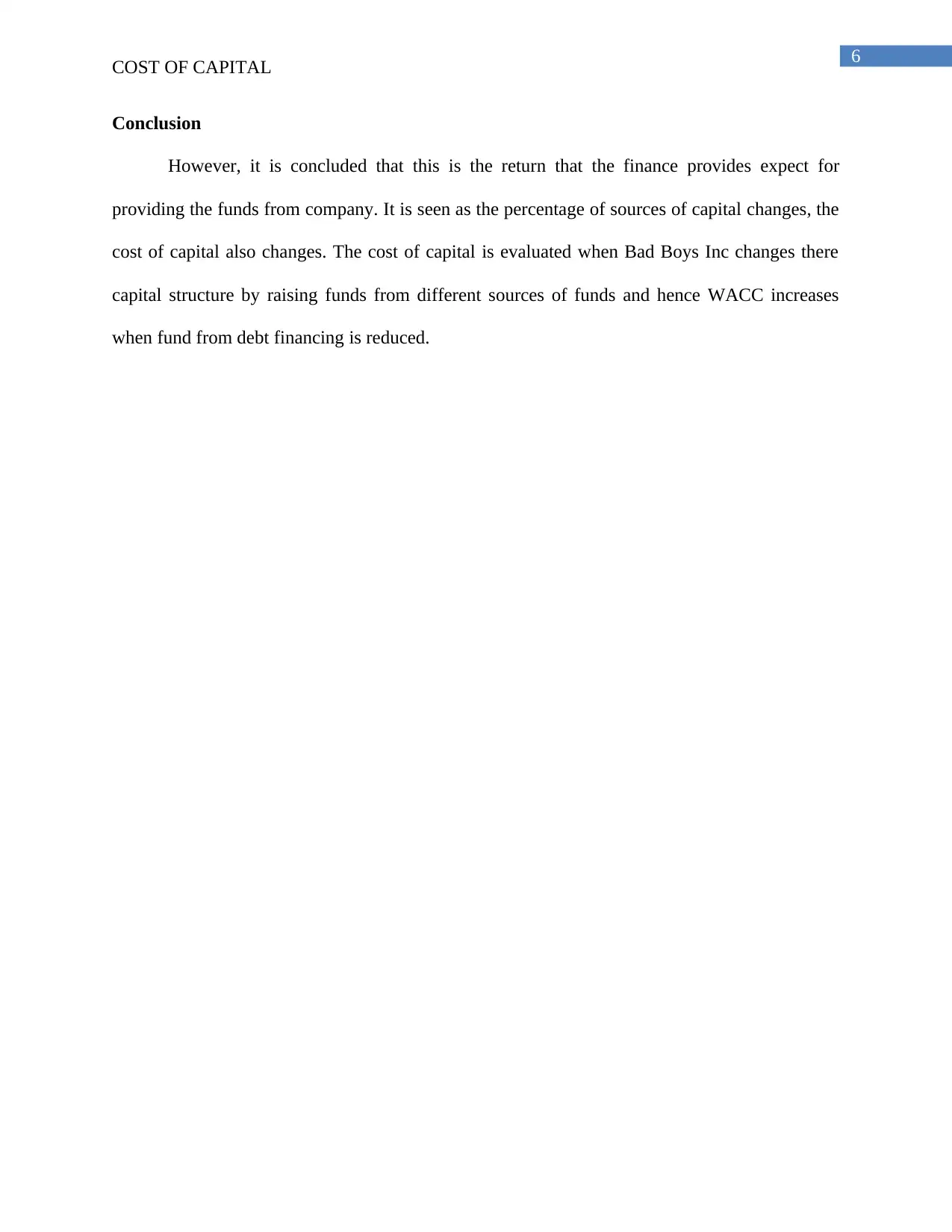
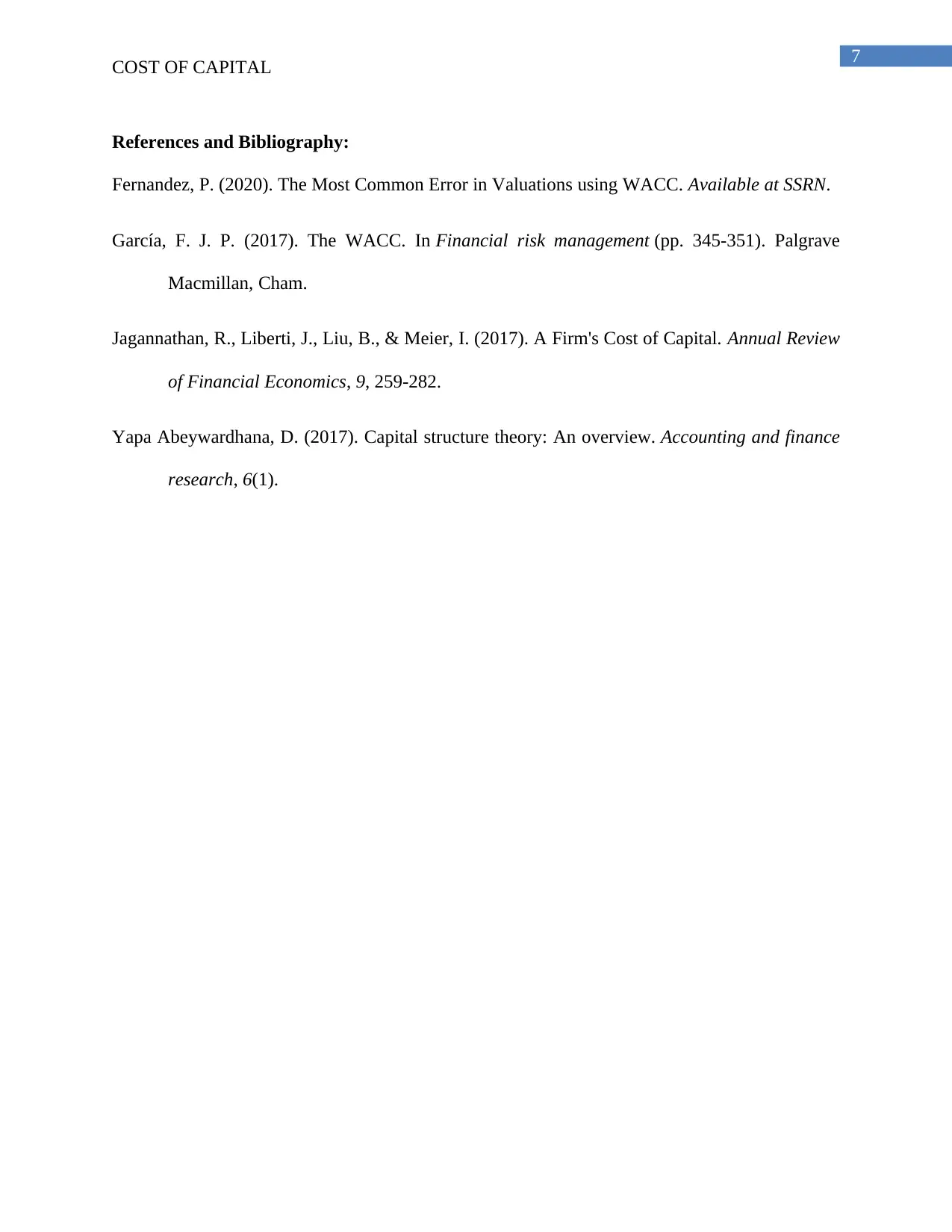





![[object Object]](/_next/static/media/star-bottom.7253800d.svg)